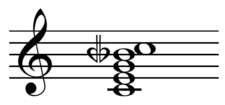Barbershop arranging

Barbershop arranging is the art of creating arrangements of barbershop music. The Barbershop Harmony Society (BHS) and Sweet Adelines International (SAI) have prescribed rules that dictate what is an acceptable arrangement, particularly with regard to singing in competition. This makes barbershop arranging a specialist form of arranging, rarely tackled by those outside Barbershop; likewise, barbershop arrangers tend to be known only for their barbershop arrangements rather than for their work in any other musical form.
Technical requirements
The following 2 paragraphs from the BHS indicate technical requirements of a barbershop arrangement for use in a BHS contest:
“Barbershop harmony is a style of unaccompanied vocal music characterized by consonant four-part chords for every melody note in a predominantly homophonic texture. Each of the four parts has its own role: the lead sings the melody, with the tenor harmonizing above the melody, the bass singing the lowest harmonizing notes, and the baritone completing the chord. The melody is not sung by the tenor or bass, except for an infrequent note or two to avoid awkward voice leading, in tags or codas, or when some appropriate embellishing effect can be created. Occasional brief passages may be sung by fewer than four voice parts.
Barbershop music features songs with understandable lyrics and easily singable melodies, whose tones clearly define a tonal center and imply major and minor chords and barbershop (dominant and secondary dominant) seventh chords that resolve primarily around the circle of fifths, while making frequent use of other resolutions. What sets barbershop apart from other musical styles is the predominant use of the dominant-type seventh chords. Barbershop music also features a balanced, symmetrical form and a standard meter. The basic song and its harmonization are embellished by the arranger to provide appropriate support of the song's theme and to close the song effectively.”
So-called barbershop seventh chords should represent at least one third of the song’s duration. As an example of circle-of-fifths resolution, a tonic triad - subdominant progression will often use the tonic 7th instead, if it advances the forward motion of the song. Close harmony prevails and other commons chords include the diminished seventh, augmented sixth, and added sixth chords.[1]
The quality of musical choices are vital to the success of a barbershop arrangement. A skillful arrangement, well executed, will provide the audience with an emotionally satisfying and entertaining experience.
Terms

A swipe is when one or more parts change pitch while the other parts hold their pitch. This provides rhythmic drive and either a chord change or a filling out of one chord.[2] Swipes are on a single syllable.[3]
For example, a filling out:
Triad --> 7th chord --> Triad T Third = Third = Third L Root = Root = Root Bar. Fifth --> Seventh --> Fifth B Root --> Fifth --> Root
A tiddly is an embellishment in one or two voices over one chord, resembling neighbor tones or suspensions. This provides rhythmic drive, and may derive from black vocal improvisation.[2]
Learning arranging
Anyone with a knowledge of music theory who can arrange should be able to write a barbershop arrangement. However, an understanding of the art form as it is practised and judged in competition is undoubtedly an advantage. A music category judge can assess an arrangement by ear or eye to test whether it is 'barbershop', and hence valid for use in competition. The BHS and its affiliated associations run courses in arranging at 'Harmony University' (formerly 'Harmony College'), which are open to members.
Relevant manuals: "Theory of Barbershop Harmony", "Barbershop Arranging Manual" and "Contest and Judging Manual" are published by the BHS.
Notable barbershop arrangers
- Steve Armstrong (Director of the Toronto Northern Lights Chorus)
- Gene Bender (Director of the Delaware Valley Show Chorus)
- Dave Briner
- Chuck Brooks
- Rob Campbell
- Jim Clancy (Director of the Vocal Majority chorus)
- Gene Cokeroft (deceased)
- Renee Craig
- Aaron Dale
- Paul Davies
- Roy Dawson
- Steve Delehanty
- Dennis Driscoll
- Phil Embry (Arranged music for the Buffalo Bills (quartet))
- Liz Garnett
- Tom Gentry
- Jay Giallombardo (Director of the New Tradition Chorus)
- David Gillingham
- Brent Graham
- Don Gray
- Warren 'Buzz' Haeger (deceased)
- Mark Hale
- David Harrington
- Rich Hasty (deceased)
- Val Hicks (deceased)
- Clay Hine
- Rob Hopkins
- Andrew Howson
- Fred King (deceased)
- Joe Johnson
- Walter Latzko (deceased)
- Joe Liles
- Chris MacMartin
- Lou Perry (deceased)
- Mo Rector (deceased)
- Adam Reimnitz
- Dave Stevens (deceased)
- Burt Szabo
- Ed Waesche(deceased)
- David Wright
- Bryan Ziegler
See also
- A cappella music
- American Harmony Documentary Film about Barbershop music
- Sweet Adelines International
References
- ↑ Apel, Willi (1969). Harvard Dictionary of Music: Willi Apel, p.78. ISBN 9780674375017.
- 1 2 3 McNeil, W. K. (2005). Encyclopedia of American Gospel Music, p.25-6. ISBN 9780415941792.
- ↑ David Horn, Dave Laing, Paul Oliver, Peter Wicke (2003). Continuum Encyclopedia of Popular Music of the World Part 1 Performance and Production, p.10. ISBN 9780826463227.